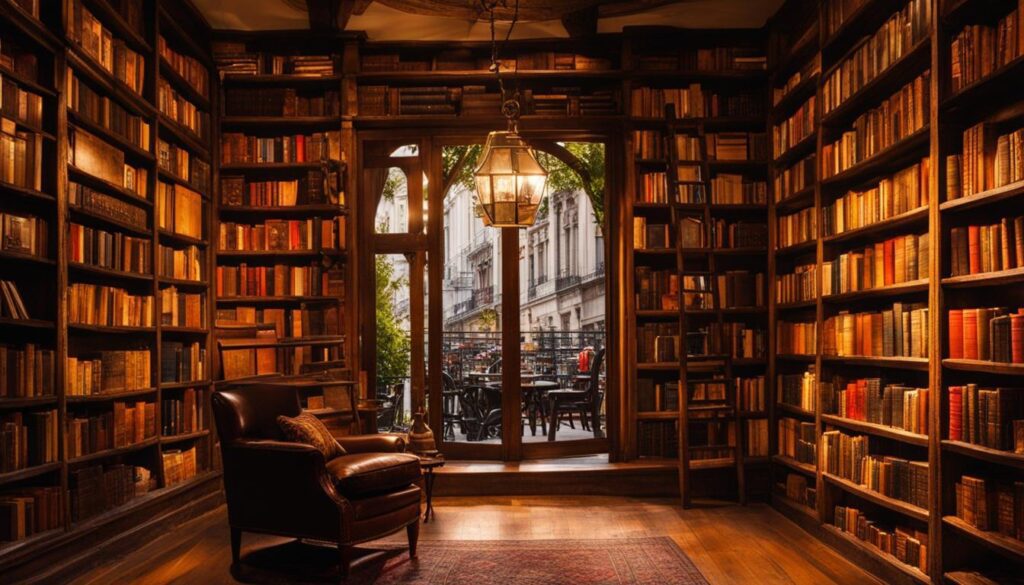The city of Buenos Aires in Argentina is a treasure trove of history and culture. From its vibrant streets to its iconic landmarks, there is a wealth of historical sites waiting to be explored. Discover the rich history of Buenos Aires and uncover its fascinating past through historical tours and visits to historical landmarks. Immerse yourself in Argentinian history and learn about the city’s historical heritage, all while preserving and celebrating Buenos Aires’ remarkable past.
As you explore Buenos Aires’ heritage, you’ll have the opportunity to visit various historical sites that offer valuable insights into the city’s intriguing history. From grand architectural masterpieces to hidden gems tucked away in local neighborhoods, Buenos Aires’ historical landmarks provide a captivating glimpse into the city’s past. Take a stroll through the historic streets and experience the charm of Buenos Aires’ rich heritage.
Historical tours in Buenos Aires offer a deeper understanding of the city’s cultural significance and historical events. Expert guides will lead you through significant locations, sharing fascinating stories and historical anecdotes along the way. Whether you’re interested in the political history of Buenos Aires or the cultural influences that have shaped the city, these tours provide a unique opportunity to delve into the depths of Argentinian history.
By discovering Buenos Aires’ past, you contribute to the preservation of its historical heritage. The city takes pride in its history and works diligently to protect and showcase its historical sites. Through your exploration of Buenos Aires’ historical landmarks, you become part of the ongoing effort to preserve the city’s legacy for future generations. So, grab your walking shoes and embark on a journey through time as you uncover the captivating historical insights of Buenos Aires.
Exploring Buenos Aires’ Iconic Landmarks
Buenos Aires, the capital city of Argentina, is renowned for its iconic landmarks that have played a significant role in shaping the city’s identity. These landmarks offer a glimpse into the rich history and cultural heritage of Buenos Aires, attracting tourists from around the world. Let’s take a closer look at some of the famous landmarks that make Buenos Aires a truly remarkable destination.
The Casa Rosada
One of the most iconic landmarks in Buenos Aires is the Casa Rosada, the pink-hued presidential palace. This historical building has witnessed countless political events and is closely associated with Argentina’s history. Visitors can explore the museum inside the Casa Rosada, which showcases artifacts and exhibitions related to the country’s political past.
The Obelisco
Standing tall in the heart of Buenos Aires, the Obelisco is a towering monument symbolizing Argentina’s independence. This impressive structure is a testament to the city’s rich history and is a popular gathering spot for celebrations and demonstrations. Visitors can admire the Obelisco from the surrounding plaza and soak in the vibrant atmosphere of Buenos Aires.
The Recoleta Cemetery
Another landmark that shouldn’t be missed is the Recoleta Cemetery. This historic burial site is home to magnificent mausoleums and the tomb of Eva Peron, a well-known figure in Argentine history. With its intricate architecture and serene atmosphere, the Recoleta Cemetery is a place for reflection and a unique glimpse into Buenos Aires’ past.
These are just a few examples of the many iconic landmarks that make Buenos Aires a city filled with historical sites and architectural wonders. Exploring these landmarks allows visitors to immerse themselves in the rich history of Buenos Aires and appreciate its unique cultural heritage.
| Landmark | Description |
|---|---|
| Casa Rosada | The pink-hued presidential palace, known for its role in Argentina’s political history. |
| Obelisco | A towering monument symbolizing Argentina’s independence, located in the heart of Buenos Aires. |
| Recoleta Cemetery | A historic burial site with beautiful mausoleums, including the tomb of Eva Peron. |
Buenos Aires’ Literary Culture and Bookstores
Buenos Aires, often referred to as the “City of Bookstores,” is a haven for literary enthusiasts and avid readers. The city’s vibrant literary culture is deeply rooted in its history and has evolved into a thriving scene that celebrates literature in all its forms. From grandiose establishments to cozy independent bookstores, Buenos Aires offers a diverse range of literary treasures waiting to be explored.
One of the most iconic bookstores in Buenos Aires is the Ateneo Grand Splendid. Housed in a former theater, this majestic bookstore combines architectural splendor with a vast collection of books. The beautifully preserved interiors provide an enchanting atmosphere, making it a must-visit destination for book lovers.
In addition to the Ateneo Grand Splendid, Buenos Aires is home to numerous independent bookstores that exude charm and offer a unique browsing experience. These hidden gems cater to niche interests and showcase the city’s rich literary heritage. Exploring these independent bookstores allows visitors to discover new authors, browse through vintage editions, and immerse themselves in the local literary scene.
The Buenos Aires Literary Scene
Buenos Aires’ literary scene is dynamic and pulsating with literary events, book clubs, and author signings. The city hosts literary festivals throughout the year, bringing together local and international authors, readers, and literary enthusiasts. These events provide a platform for literary discussions, book launches, and workshops, fostering a sense of community and inspiring literary exploration.
Whether you’re a devoted reader or simply appreciate the written word, Buenos Aires’ literary culture offers a multitude of experiences. From browsing the shelves of iconic bookstores to attending thought-provoking literary events, the city invites visitors to immerse themselves in the world of literature and deepen their understanding of Buenos Aires’ rich literary heritage.

Table: Independent Bookstores in Buenos Aires
| Bookstore | Location | Specialty |
|---|---|---|
| El Ateneo Grand Splendid | Avenida Santa Fe 1860 | General selection, vast collection |
| Librería Clásica y Moderna | Avenida Callao 892 | Philosophy, classic literature |
| Librería Eterna Cadencia | Avenida Humboldt 1542 | Independent authors, contemporary literature |
| Librería Hernández | Avenida Corrientes 1436 | Buenos Aires history, poetry |
| Libros del Pasaje | Avenida Santa Fe 2779 | Art, design, photography |
Table: A selection of independent bookstores in Buenos Aires, showcasing their locations and specialties.
The Quirky Charm of Recoleta Cemetery
Recoleta Cemetery is an iconic cemetery located in Buenos Aires, Argentina. Known for its stunning architecture and famous mausoleums, it is a must-visit destination for history enthusiasts and curious travelers. The cemetery’s intricate details and beautiful surroundings make it a captivating place to explore, providing a unique opportunity to reflect on the past and appreciate Buenos Aires’ historical heritage.
Recoleta Cemetery has gained international recognition as one of the most beautiful cemeteries in the world. Its ornate mausoleums, designed by renowned architects, are a testament to the city’s rich history and cultural significance. One of the cemetery’s most famous tombs belongs to Eva Peron, the beloved first lady of Argentina. Visitors can pay their respects to this iconic figure and learn more about her impact on Argentine society.
Strolling through the narrow pathways of Recoleta Cemetery, visitors will encounter the final resting places of many prominent Argentinian figures, including writers, politicians, and military heroes. Each mausoleum tells a story, and exploring the cemetery allows visitors to delve into the lives and legacies of those who have shaped the history of Buenos Aires.
Tango Culture in Buenos Aires
No visit to Buenos Aires is complete without experiencing the passion and energy of tango. Tango is an integral part of the city’s cultural heritage, originating in the working-class neighbourhoods of Buenos Aires in the late 19th century. Today, Buenos Aires is known for its tango clubs, music, and dance performances, providing visitors with the opportunity to witness the captivating art form firsthand.
Immerse yourself in the world of tango and discover its history and significance in Buenos Aires’ cultural landscape. Tango clubs in Buenos Aires offer a unique atmosphere where you can watch professional dancers showcase their skills or even join in on a tango lesson to learn some moves yourself. The sultry music and intricate dance steps create an electric atmosphere that you won’t soon forget.
Not only is tango a vibrant cultural expression, but it is also a way to connect with locals and learn more about the Argentine culture. The history of tango is deeply intertwined with the social and political history of Argentina, making it a fascinating subject to explore. From its humble beginnings in the bustling streets of Buenos Aires to its global recognition today, the history of tango reflects the resilience and creativity of its people.
So, why not embrace the rhythm of Buenos Aires and immerse yourself in the world of tango? Whether you choose to admire a dynamic tango performance or take part in a dance class, you will undoubtedly gain a deeper appreciation for the artistry and cultural significance of this iconic dance form.
FAQ
What historical sites can I visit in Buenos Aires?
Buenos Aires is home to numerous historical landmarks, including the Casa Rosada, the Obelisco, the Recoleta Cemetery, and the Teatro Colon.
Are there any famous mausoleums in Recoleta Cemetery?
Yes, Recoleta Cemetery is known for its famous mausoleums, including the tomb of Eva Peron.
What is the literary culture like in Buenos Aires?
Buenos Aires is known as the “City of Bookstores” and has a vibrant literary culture, with numerous bookstores, literary events, and a thriving book club scene.
What is the significance of tango in Buenos Aires?
Tango is an integral part of Buenos Aires’ cultural heritage, originating in the city’s working-class neighborhoods in the late 19th century. It is celebrated through tango clubs, music, and dance performances.
How can I explore the historical heritage of Buenos Aires?
You can explore Buenos Aires’ historical heritage through historical tours, visits to historical landmarks, and immersing yourself in the city’s rich history and culture.



